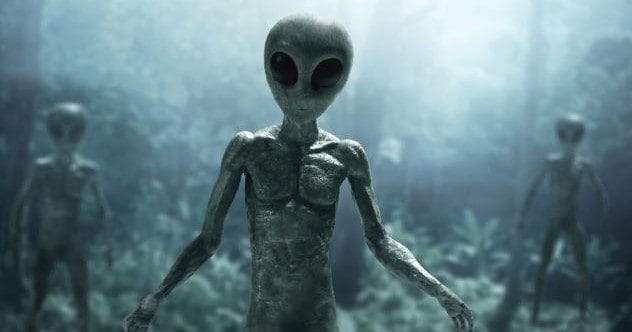Have you ever wondered why we haven’t found any aliens yet? The Fermi Paradox questions why, given the vastness of the universe, we haven’t encountered extraterrestrial civilizations. Maybe, just maybe, we’re looking in the wrong spots. Forget Earth-like planets; perhaps life thrives in places so strange they defy our imagination. Let’s dive into ten incredibly weird places where aliens might be lurking.
10. Venus
Venus, often called Earth’s “sister” planet due to its similar size and mass, seems like an obvious place to look for life. Early astronomers even envisioned Venus as a humid, tropical swamp teeming with life. However, space probes revealed a surface hot enough to melt lead and a toxic atmosphere with crushing pressure. Not exactly inviting, or is it?
Believe it or not, there are parts of Venus that might harbor organisms. Higher in the atmosphere, the pressure eases, the temperature cools, and there might be less sulfuric acid. Single-celled organisms could potentially exist here, drifting in the high winds. Some theories suggest these organisms could have a two-stage lifecycle: active when conditions are right, and hibernating when falling toward the surface, only to be carried back up to the habitable zone.
Although a recent detection of phosphine, a gas associated with life, turned out to be mistaken, the possibility of life on Venus hasn’t been ruled out. We just need to look harder!
9. Under Ice
Liquid water is essential for life as we know it. That’s why astronomers often look for Earth-like planets in habitable zones. But what if vast oceans exist outside these zones, hidden beneath layers of ice?
Jupiter’s icy moons—Ganymede, Europa, and Callisto—might conceal deep reservoirs of water beneath their icy crusts. Europa, despite being only a quarter of Earth’s diameter, could hold more than four times the water found in Earth’s oceans! The immense pressure from Jupiter’s gravity could keep these oceans liquid.
Since life can thrive in Earth’s deepest, darkest seas, it’s plausible that life could exist on these icy moons. Future space missions aim to explore these moons further, seeking signs of life.
8. Comets
Comets, those spectacular icy travelers, might have been crucial in bringing water to early Earth. But could life exist on comets themselves?
Comets spend most of their time far from the Sun’s warmth, with temperatures near absolute zero and virtually no atmosphere. Yet, the Rosetta space mission detected chemicals strongly linked to biological life on comet 67P/Churyumov-Gerasimenko.
While few suggest actual organisms live on comets, the Panspermia theory proposes that comets spread life between planets. Even if they don’t harbor life, the presence of complex hydrocarbons on comets hints at their role in the emergence of life on Earth.
7. Meteorites
Meteorites, rocks from space, offer scientists a glimpse into the solar system’s past, including the possibility of finding life.
Some meteorites originate from other planets and moons. Large collisions can eject rocks into space, which then fall to Earth. Several meteorites traced back to Mars contain microscopic structures that some scientists interpret as fossils of Martian life.
In 1996, the discovery of such fossils in a Mars meteorite sparked debate, but other researchers have found similar results in other meteorites, along with the building blocks of proteins. Maybe the next shooting star carries undeniable proof of alien life!
6. Gas Giants
In 1976, Carl Sagan and Edwin Salpeter explored the possibility of life on Jupiter, a gas giant with a hydrogen and helium atmosphere containing methane, ammonia, and water. They proposed that Jupiter could be habitable for extremely alien lifeforms.
Despite the lack of a solid surface and high wind speeds, Sagan and Salpeter envisioned four types of organisms in Jupiter’s upper atmosphere: “sinkers” (small, algae-like organisms), “floaters” (vast, kilometers-wide animals using gases for propulsion and buoyancy), and species of hunters and scavengers.
Although such life hasn’t been found, the idea that gas giants around other stars could host exotic life remains a tantalizing prospect.
5. In Liquid Methane
Titan, Saturn’s largest moon, has a thick atmosphere and a surface with ice, water-ammonia volcanoes, and lakes. These lakes, however, are made of liquid methane and ethane due to Titan’s frigid temperatures.
Could life evolve to thrive in these hydrocarbon liquids? Models suggest organisms could metabolize hydrogen and acetylene from the atmosphere. These cells would need to be radically different from Earth cells.
Instead of phospholipid membranes, Titan cells might use acrylonitrile to create hard, crystalline membranes that can withstand the hydrocarbon environment.
4. Asleep
Maybe aliens aren’t being detected because they’re all hibernating. Researchers have proposed the “aestivation hypothesis,” suggesting that alien civilizations might enter hibernation for efficient energy use.
The universe is still relatively young, with galaxies actively forming stars. However, one day, the last star will die, and the universe will become colder and darker. Aliens might be waiting for this distant future.
By storing energy now and hibernating, they could wake up trillions of years later and accomplish significantly more work due to the universe’s altered physical conditions! It’s a long-term energy-saving strategy.
3. Black Holes
A black hole seems like the last place to find life. Falling past the event horizon means inescapable doom, and the surrounding region teems with lethal radiation. Yet, some researchers believe black holes could offer sanctuary to organisms.
Black holes pull in matter through gravity, just like any other massive object. Objects traveling at the right speed and direction can orbit them. Planets could form in the matter surrounding a black hole.
Even without a sun, the searing hot accretion disc around many black holes could provide energy for life.
2. Dust
Perhaps we’re missing life because we’re focused on planets, not space itself. Computer models suggest that electrically charged interstellar dust can self-organize into life-like structures.
Atoms in space often exist as charged ions. In low-gravity environments, these ions can form filaments that corkscrew, similar to DNA.
These self-assembling structures can then evolve. Different filament forms have been observed to evolve over time as they create copies of themselves, hinting that aliens might be more “out there” than we ever imagined.
1. Stars
The most extreme idea? Life lurking within the inferno of active stars, not made of ordinary matter but of cosmic strings and magnetic monopoles.
Cosmic strings, theoretical objects, might be captured within stars. Inside the star’s high-temperature interior, these strings and monopoles could twist into complex, self-replicating forms, analogous to DNA.
These stringy lifeforms could then evolve as they make slightly varied copies of themselves. The authors suggest this life could influence a star’s energy output, so if the sun seems brighter than usual, it might be our neighbors saying hello!
Conclusion
From the clouds of Venus to the heart of stars, the universe might be teeming with life in forms we’ve barely begun to fathom. By expanding our search and challenging our assumptions, we might finally answer the question: Are we alone?
What do you think? Leave your comment below and share your thoughts on the weirdest places aliens might be hiding!










